Skull Blue Quartz
$15.00
SIZE: 1.5″
Price is for 1 piece. Multiple pieces are shown to demonstrate how no two are alike, differing in both size & shape.
BLUE QUARTZ SKULL
Blue Quartz, a soothing and calming stone, brings balance and eases tension. It has a helpful vibration for any situation requiring diplomacy. It enhances organizational ability, self-discipline, and orderliness. It provides balance to the throat chakra and opens communication between the lower and upper chakras. It is said to help the immune system.
This is an interesting combination that evokes a sense of the importance of communication between the center of the self which is seated in the cranium and the outer world under the blue sky that encircles the Earth. This vibra5tion would be great for those who must interact with others in the world. It would be especially good for reporters who cover world news, for business representatives who travel to represent their companies in dealings around the country or world, and for public servants who represent their country in dealings with the public. The strong diplomacy associated with Blue Quartz and the transformative nature of the skull make this an especially strong vibration for those who seek to obtain agreements that reach between cultures, making this a good combination for diplomats and politicians and those working in that arena.
Price is for 1 piece. Multiple pieces are shown to demonstrate how no two are alike, differing in both size & shape.
THE SKULL
HISTORIC USES OF THE SKULL
The human skull has been a cultural icon in many parts of the world throughout history. It is most commonly used to represent death and mortality, but it has also been seen as a promise of a brighter future and a link to universal knowledge.
The Legend of the Thirteen Skulls
The legend of the thirteen skulls was first noticed in Western culture in the nineteenth century with the discovery of pre-Columbian Mesoamerican artifacts that have been attributed by archeologists and anthropologists to the Maya and the Aztec civilizations. The artifacts were human skulls carved from crystals. It has been suggested that the skulls may have originated in the legendary realms of Atlantis or Lemuria. Whatever their origin, the skulls that have been found are beautiful artistic statements from ancient cultures.
Cherokee Medicine Man Harley Swift-Deer has explained that according to Native American legends, the skulls were kept inside a pyramid in a formation of tremendous power known as the Ark. The Ark was composed of twelve skulls, one from each of the sacred planets, kept in a circle. Each of the twelve skulls contained all of the knowledge from the planet it represented. The thirteenth skull was the largest of them all, and was placed in the middle of the circle. The thirteenth skull represented the collective consciousness of all of the sacred planets. Some believe the skulls are tied to the myths surrounding the Maya calendar
According to native legend, at a pivotal time in history, the skulls will be reunited to awaken a new era in which the old world paradigm will be transformed into a new world. Each of the skulls is said to be like a library of knowledge from the sacred planets that will aid in the transformation to the new age. Many believe that now is the time of awakening for the transformation promised by the thirteenth skull; that the Warriors of the Rainbow are being born; and that the transformation will bring great and ecstatic joy to the world. It is thought that this transformation will bring a time to love all things and to dance through life in this world.
Historical Symbolism of the Skull in Western Art and Culture
The skull has been a widely used symbol in Western art and culture throughout history.
During the Middle Ages and Renaissance, it was included on the Wheel of Fortune as a symbol of life-changing transformation. It was and still is used to symbolize transformation in Tarot cards.
In Elizabethan England, the skull was a symbol for rakes, bawds, sexual adventurers, and prostitutes. Those following such traditions wore a silver ring portraying a half skull to advertise their station, either professional or other.
In Europe, skulls of the dead were sometimes posted by the victors of battles or wars as a sort of banner of victory and warning that further resistance would lead to dire punishment and death. The most dramatic and lasting monument to this practice can be found in the Skull Tower which was built in 1809. After a Serbian uprising against the Ottoman Empire was quelled, the victorious Ottoman leader built the tower using the skulls of defeated rebels to warn against any further resistance to the Ottomans.
The skull is used frequently in Christian-inspired art works. Golgotha, the hill where Jesus Christ was crucified, is known as the Place of the Skull. The hill has a shape that is reminiscent of a skull or partial skull. It is also said to have been the place where the original man, Adam, was buried. In Christian art works, the placement of a skull at the base of a cross is often intended to symbolize the blood of Jesus Christ flowing over the skull of Adam. The belief is that Adam’s skull represents original sin; Christ’s blood was shed to absolve all of the sin in the world; and that it flows over the skull washing clean the souls of all. There is also a theory that Golgotha is the place where Goliath was buried. St. Francis is often depicted carrying a skull. It is said that he kept a skull nearby as a reminder of the temporary nature of life and that death is a part of life.
In Renaissance paintings, the skull was often placed at the foot of the cross on Golgotha as a symbol of death and life after death. In a 1902 double image painting by C. Allan Gilbert, the skull was used as a symbol of vanity by making the shape of the skull and a lady’s vanity interchangeable with each other. The skull was famously used by Shakespeare as a symbol of melancholy about death and mortality in the play Hamlet.
The skull, sometimes paired with crossbones, has been used as a military insignia in many places and times. The Knights Templar used the skull and crossbones on their flags beginning in the twelfth century as a symbol of higher attainment and enlightenment. This skull and crossbones symbol, called in German a Totenkopf, was also used during the German Third Reich by Hitler’s elite Schufzstaffel or SS. Heinrich Himmler, the leader of the SS, said that the skull insignia was a reminder that the SS soldier would always be willing to put himself at stake for the life of the whole community. It was a symbol of loyalty unto death.
Pirates used the combination of skull and crossbones on a flag beginning at least as far back as the fourteenth century. The term for the skull and crossbones, Jolly Roger, was first used by Richard Hawkins to describe a pirate flag he encountered in the early eighteenth century that depicted a skeleton on a black background stabbing a knife into a heart. It is thought to have been a symbol of the pirates’ ruthlessness and despair as they plied their trade challenging the natural order of things. It was often used as a battle flag that announced the intent to attack.
The skull has sometimes been used as a warning of danger. This use is best illustrated by the traditional use of the skull paired with crossbones on the outside of containers holding poison or other dangerous materials.
In Celtic traditions, the skull is considered the house of the soul and the boundless power in the cyclical nature of life.
In Mexico, colorful skulls are used to commemorate the dead in the festivals held on the Day of the Dead. The skeletons and skulls represent the departed and are often depicted doing things they enjoyed doing in life.
In Wiccan tradition, the skull is a magical symbol. The skull is considered the seat of the spirit or soul. It is a crucible for the transformation of the spirit. A skull with a candle placed on it is a symbol of an oracle. It represents the physical form ignited by the fires of the Gnostics to reveal ancestral knowledge and wisdom. It is a gateway between worlds. The symbol of a skull may be worn as an amulet of power which may also protect the wearer from bad magic.
The Skull in Eastern Art and Culture
In the Hindu religion, skulls strung on bracelets or necklaces often adorn the deities. They are sometimes worn by gods and goddesses to symbolize the fact that they have conquered death. Nataraja, an incarnation of Shiva, dances the cosmic dance of creation wearing a necklace of skulls. The skulls symbolize time and the circular nature of life, death, and rebirth. Kali, a goddess of death and mortality and also the image of divine motherly love, is often depicted wearing a necklace made of skulls. The skulls are said to represent liberation, knowledge, and wisdom.
Important Buddhist figures are often depicted wearing necklaces of skulls or skull beads. The skull bead necklaces are called munda mala. The skulls represent emptiness, a quality of the universe sought by those following the Eightfold Path. In order to find nirvana, one must reach emptiness.
In Japan, the skull and skeleton represent Gashadokuro, a mythological Japanese creature that is said to be composed of the bones of people who starved to death or were killed in battle.
| Skull Gemstone Carvings 1.5" | Blue Quartz Skull 1, Blue Quartz Skull 2, Blue Quartz Skull 3 |
|---|
Be the first to review “Skull Blue Quartz” Cancel reply
Related products
Small Crystal Skulls
Small Crystal Skulls
Small Crystal Skulls



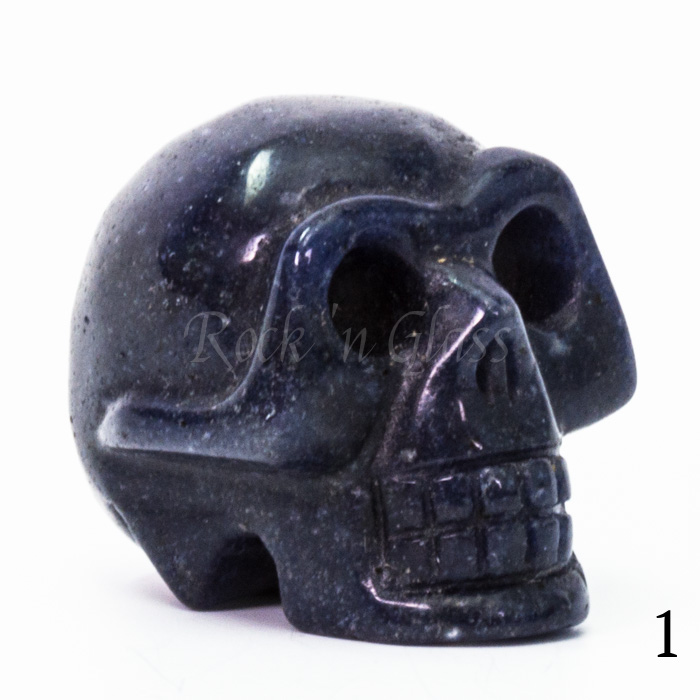
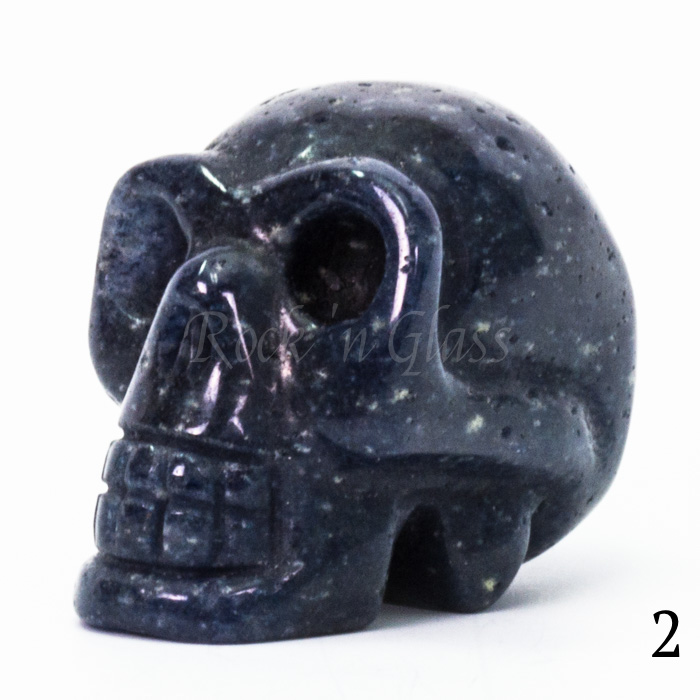
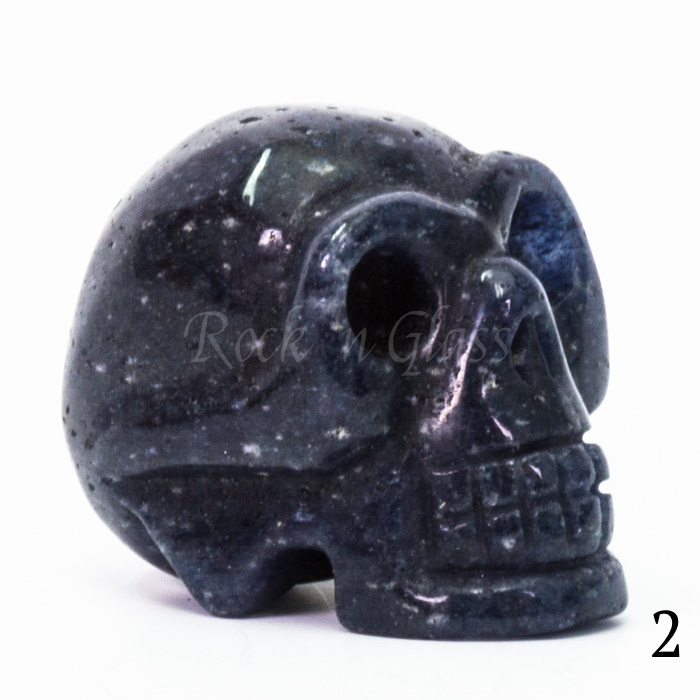
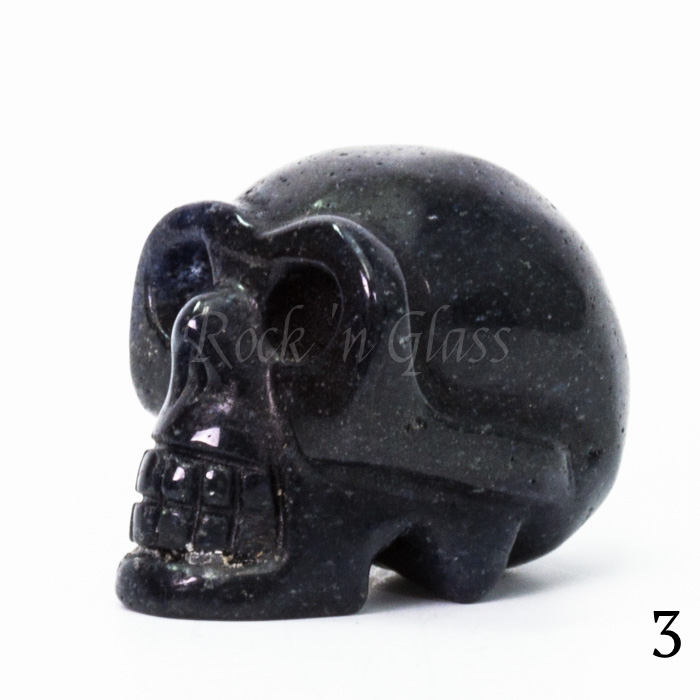
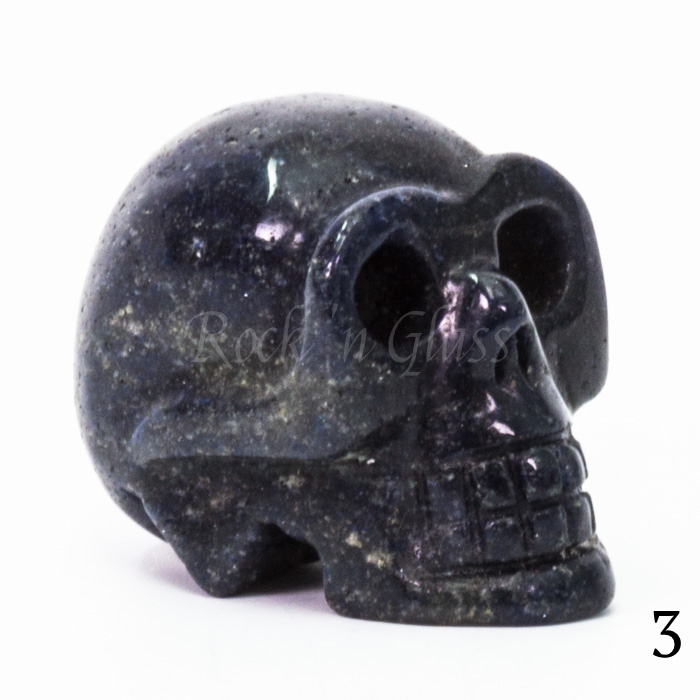
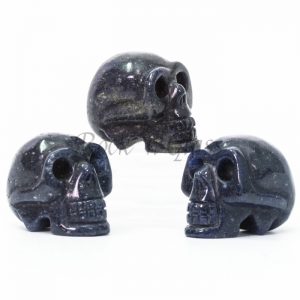

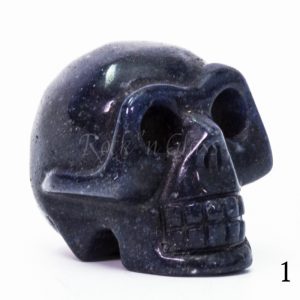
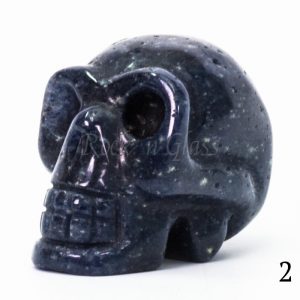
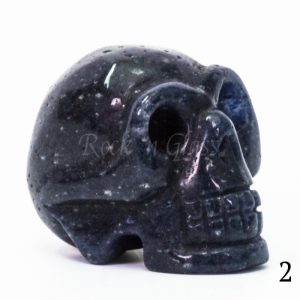
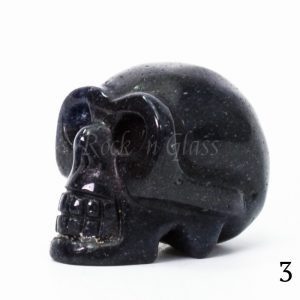
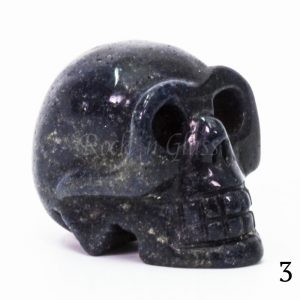
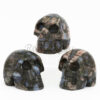

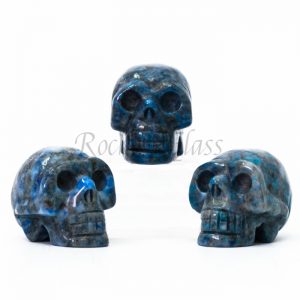
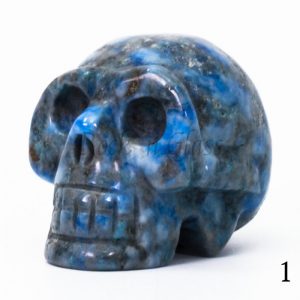
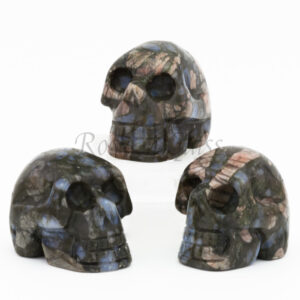
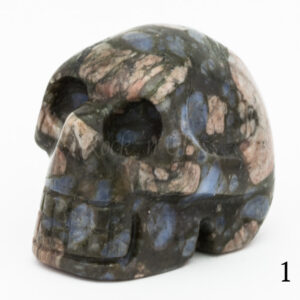
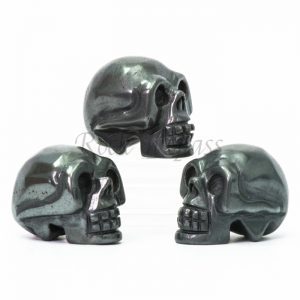
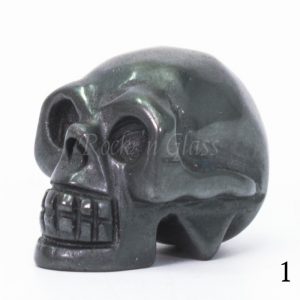
Reviews
There are no reviews yet.